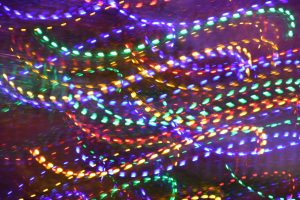What Is A Full Spectrum LED?
1. Introduction
Due to the impact of the epidemic, it has been a long time since the last lighting industry event, the lighting exhibition, and whether there will be a lighting exhibition in China this year remains to be discussed. The impressive highlights of the last edition were smart lighting, landscape lighting, horticultural lighting, LED filament lights and healthy lighting.
We have mentioned healthy lighting many times, and “lighting should be people-oriented” has become the consensus of the industry. Manufacturers are no longer just about pure light efficiency or service life, but consider people’s perception of light and the impact of light on people, hoping to create artificial light that is closer to natural light.
Natural light is “sunlight”. 5,000 years ago, people mainly relied on natural light for sunrise and sunset. In the 19th century, with the development of the electric power industry, the first artificial light appeared, and then artificial light experienced incandescent lights, fluorescent lights… …to now LED… People have been chasing artificial light that is closest to sunlight. With the maturity and development of LED technology, manufacturing full-spectrum LEDs with a spectrum similar to that of the sun has become an industry hotspot in recent years.
2. What is a full spectrum LED
The full spectrum refers to the spectrum curve that includes ultraviolet, visible and infrared light in the spectrum, and the ratio of red, green and blue in the visible part is similar to that of sunlight, and the color rendering index Ra is close to 100.
The spectrum of sunlight can be called the full spectrum, and the color temperature changes with the four seasons and the time of morning and evening. Therefore, the spectrum of the full spectrum light should change the color temperature successively with the change of time, and simulate the natural light environment in order to be more in line with the natural growth laws of organisms. .
The continuous spectrum of solar radiation at noon on a sunny day, with a color temperature of 5000K, is divided into two parts: visible light and invisible light. The wavelength of visible light is 400~760 nm, which is divided into 7 colors of red, orange, yellow, green, cyan, blue, and purple, which are concentrated as white light; there are two types of invisible light, infrared with wavelengths greater than 760 nm and ultraviolet rays with wavelengths of 290~400 nm.

A full spectrum LED should simulate the 5000K solar spectrum as much as possible.
The blue light spectrum in ordinary LEDs is relatively high, lacking violet light, cyan light, short-wave green light and long-wave red light. At present, full-spectrum LEDs are realized by chips + phosphors. Phosphors with wavelengths in the recessed region are used to complement the spectrum.
The color rendering ability of a light source to an object is called color rendering. The color rendering index of sunlight is defined as 100. The closer the color rendering index (Ra) value is to 100, the better the color rendering.
15 sample colors are used to evaluate the color rendering of the light source. The special color rendering R9 is an indicator of the reproduction quality of the vivid red color of the LED. The higher values of Ra and R9 are the performance of high-quality LEDs.
Compared with ordinary LEDs, full-spectrum LEDs have a more continuous spectrum and wider color gamut; the color rendering index Ra is greatly improved, closer to 100; the special color rendering index R9 can be as high as 90 or more.
3. Features of full spectrum LED
Full-spectrum LEDs greatly enhance the continuity and integrity of the spectrum by complementing the missing short-wave purple, cyan, short-wave green, and long-wave red parts of the spectrum, making the color gamut wider and closer to the full spectrum of sunlight.
Short-wave “violet light” helps the human body synthesize vitamin D and promote the body’s absorption of calcium. The violet light with a wavelength of 400-420 nm also helps plants form anthocyanins and resist the elongation of branches and leaves. Long-wave “red light” can promote the overall growth of plants during the flowering and fruiting stages.
The blue light band in the ordinary LED spectrum is relatively large, and excessive blue light and improper use of lighting fixtures can cause visual damage. Blue light suppresses the secretion of melatonin, which may lead to insomnia. Full-spectrum LED lights can not only effectively reduce the blue light hazard of lighting LED light sources.
4. Application of full spectrum lights
(1) Plant lighting
The effect of spectral range on plants:
The wavelength of 280-315nm is already ultraviolet light, and it has the function of directly suppressing the growth of various animals, plants and even fungi; the light wave of 315-400nm is also far-ultraviolet light, which absorbs less chlorophyll and prevents stem elongation; 400-520nm ( Blue) wavelength can directly make plant roots and stems develop, and has the largest absorption ratio of chlorophyll and carotenoids, and has the greatest impact on photosynthesis; 520-610nm (green) The absorption rate of green pigment is not high; 610-720nm (red) It has a significant impact on photosynthesis and plant growth rate; wavelengths such as 720~1000nm belong to infrared wavelengths, which have a low absorption rate for plants and can directly stimulate cell extension, which will affect flowering and seed germination; > 1000nm––> is close to thunder The wavelength of the emitted light has been converted into heat.
In addition, full-spectrum LEDs contain a small amount of ultraviolet light, which can effectively prevent pests and diseases.
The previous plant lights were mostly red-blue combination, all-blue, and all-red, which were used to cover the wavelength range required by plants for photosynthesis. In recent years, full-spectrum LED grow lights have become popular.
(2) Camera full spectrum LED fill light
The camera is basically equipped with LED fill light, which is used for shooting fill light at night and in dark environments. Without this kind of fill light, there will always be whitening, skin color, and object color completely deviating from the normal color. The full-spectrum fill light can complement all wavelengths and colors, making skin color and color closer to the real thing.
In addition, full-spectrum LEDs are also used in surgical lights, eye protection lights, museum lighting, high-end venue lighting and other fields that require high spectral quality.
5. Concluding
According to industry statistics, the current proportion of full-spectrum LEDs in the LED market is only about 2%. Compared with ordinary LEDs, the cost of full-spectrum LEDs is slightly higher. Due to price constraints, there is a greater resistance to promotion.
Industry insiders predict: With the continuous improvement of full-spectrum technology, some users will realize the importance of full-spectrum light quality, and its market share will grow rapidly. transition from high color rendering LEDs to full spectrum LEDs.
It is reported that existing enterprises and scientific research institutions have worked together to develop full-spectrum lighting systems while developing full-spectrum lighting systems that can simulate the color temperature changes of sunlight throughout the year and in different time periods in the morning and evening, which is more in line with the natural growth laws of organisms.
Wisdom achieves dreams, and technology changes life. The essence of LED lighting is to provide artificial light. The meaning of artificial light is to be close to natural light. With the continuous development and maturity of LED technology, it will definitely bring us a more comfortable light environment.



